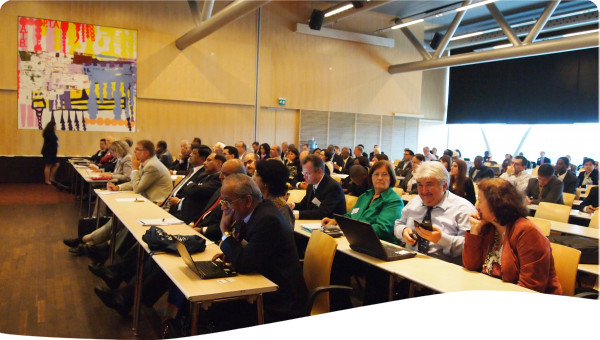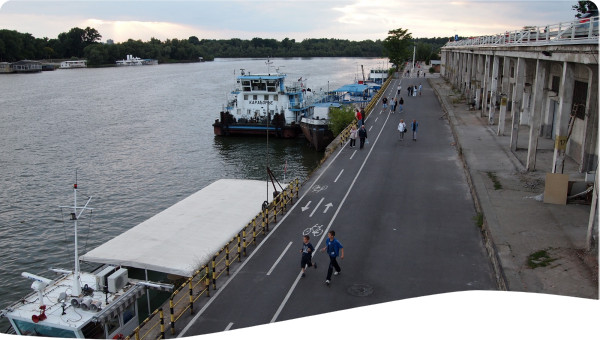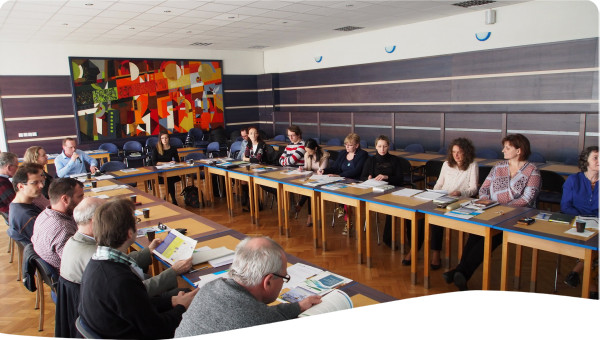 Tool -
Tool -
Stakeholder analysis is the process of identifying stakeholders, establishing their characteristics, investigating their relationships, and understanding their involvement (The CEO Water Mandate, 2015). Stakeholders are individuals, groups or organisations who impact or may be impacted by the outcomes of a decision, action or issue making them the most important factor in any intervention (Laušević et al., 2016). The complexity of water resource planning and management makes it essential to bring multiple stakeholders together and establish clear communication for fair, efficient, transparent, and informed decision making (Tools C2; Tools C6).
Stakeholder analysis is a cross-cutting Tool that is required in any IWRM planning and implementation process (GWP, 2000). Fundamentally, stakeholder analysis is an ethical requirement because humans depend on water resources and, therefore, should have the right to be informed and participate in decisions regarding its management (Tool A2.05). The analysis alone is insufficient to ensure inclusive water interventions as they must be translated to meaningful stakeholder engagement that addresses power relations and provides access to decision making spaces (Tools B5). Stakeholder analysis remains the first step to tackle these dynamics by gathering information and an adequate understanding of interests and powers/influences.
Some benefits of stakeholder analysis are as follows:
- Allows project design to consider local context, stakeholder perspectives, needs, interests, and priorities;
- Fosters ownership amongst stakeholders to ensure acceptance of project while also identifying potential issues early in the project cycle;
- Promotes effective dialogue/information sharing between communities, local action planners, heads of governments, water agencies, and heads of basin organisations to construct shared vision (Tool C2.02) and understand their contributions and its subsequent impacts;
- Identifies traditionally marginalised groups such as women, indigenous communities, youth and elderly as important stakeholder to consider;
- Provides an entry point for stakeholders to participate in decision making processes (Blázquez, García and Bodoque, 2021);
- Supports improved water governance through conflict management (Tool C6.03) and collaboration (Tropp, 2007).
Since stakeholder attributes and dynamics change over time and as a result of the project, stakeholder analysis should be an iterative process that starts early in the planning stage of water management initiatives and is consistently revisited throughout the project (Bendsten, Westergaard and Foss Hansen, 2021). Conducting a stakholder analysis involves three steps (WWF, 2005):
- Identifying the key stakeholders and their interests (positive or negative) in the project: The first step in stakeholder analysis is to identify all relevant stakeholders including their roles and characteristics. The identification process is dependent on understanding stakeholders which can be done through interactions and semi-structured questions. The list of stakeholders may change as the understanding regarding each stakeholder increase. An output of the process is a stakeholder analysis matrix that consists of key stakeholder information such as stakeholder name, mandate, potential role in the project and if they belong to any marginalised groups. Some examples of the matrix are presented by Rietbergen-Mccracken and Narayan (1998) and WWF (2005).
- Assessing the influence and importance of each stakeholder as well as the potential impact of the project upon each stakeholder: The “influence” and “importance” of each identified relevant stakeholder is then assessed. The ranking is simply to assign to each stakholder a “low” or “high” score for “influence” and “importance”. Then the stakeholders can be mapped in a stakeholder analysis grid according to their level of interest, influence and type of engagement in the project (Figure 1). This should also consider their relationships such as support, rights, level of conflict or collaboration within and across all stakeholders that have been mapped.
- Identifying how best to engage stakeholders: The last step it to determine the type stakeholder engagement based on their quadrant. This results in four types of stakeholder groups, each of them having their own engagement strategy, “keep informed”, “engage”, “consult”, and “monitor and satisfy” (Figure 1). Logically, the group of stakeholders that are identified as “high influence and high interest” are those that you want to “monitor and keep satisfied”.
Figure 1. Influence vs Interest Grid used for stakeholder mapping (Adapted from Ginge, 2018)
Many methods and techniques can be used to further complement and detail different aspects of stakeholder analysis. Some examples of methods for identifying stakeholders are focus groups, surveys and interviews, which also provide insights into stakeholder needs and interests. Stakeholder mapping is also a very important aspect of the stakeholder analysis. Specific techniques that can be used are:
- Actor Linkage Matrix (Biggs and Matsaert, 1999): Actor linkage matrices are constructed by listing relevant stakeholders in the rows and columns and filling in information on interactions between stakeholders matrix cells. It can be used for situational analysis, contemporary historical analysis, monitoring and identifying linkages/exchanges between stakeholders.
- Social Network Analysis (Reed et al., 2009): Social Network Analysis (SNA) makes use of matrices to organise data on the relational ties among stakeholders. It uses numbers to represent the presence/absence, relative strength and type of relationship (communication, friendship, conflict, trust) they have with one another.
- Q Methodology (Damio, 2016): The Q methodology allows to systematically study a range of multiples perspectives from different stakeholders. Considering the subjectivity of stakeholder views enables better project planning and execution.
- Alignment, Interest, Influence Mapping – AIIM (Mendizábal, 2010): AIIM allows visual representation of stakeholder distribution, attribution, agency. All stakeholders are plotted based on their alignment with proposed approaches and interests. It also considers pathways for change and can be used for monitoring and adapting,
- Power Analysis (Brouwer, Groot and Van Vugt, 2012): There are a range of tools such as power cube, power matrix and power ranking that can help identify the power dynamics between stakeholders. This can help in identifying non-dominating players and their characteristics during stakeholder analysis processes.
There are many challenges to effective stakeholder participation, and many ways that stakeholder participation can be done ineffectively with negative consequences. Firstly, stakeholder analysis can be misused to empower some and disempower others (Metzger, Soneryd and Linke, 2017). Hence, it is important to identify stakeholders and assign them attributes with sufficient information or participation from stakeholders themselves to avoid external influences and exclusivity (FSC, 2021). Equity must be ensured by paying careful attention to information access and participatory capacity (time, finance, culture) for gender, youth, marginalised, and indigenous communities (Botes and Van Rensburg, 2000).
Inclusive and comprehensive stakeholder analysis are time consuming and costly. Many donor organisations require stakeholder analysis but a “desk study” may meet this requirement during resource constraints. This should be avoided as it fails the fundamental purpose of stakeholder analysis to effectively understand social and institutional context (Rietbergen-McCracken and Narayan, 1998). Genuine engagement in stakeholder analysis should be measured by the power of initiative gained by the community and the relationships between stakeholders (Sachs and Silk, 1990). Furthermore, a balance between top-down and bottom-up approaches at lowest appropriate levels is required for transparency, inclusion, and action.





